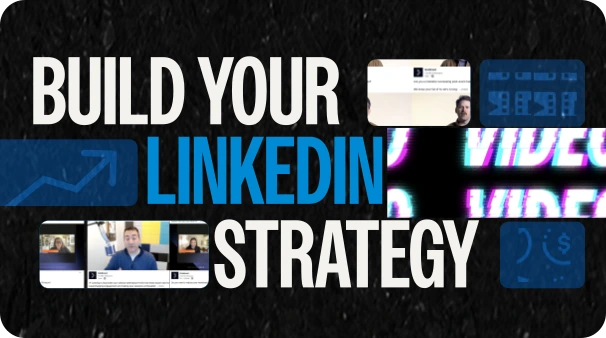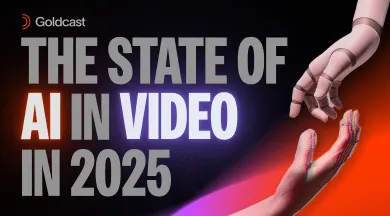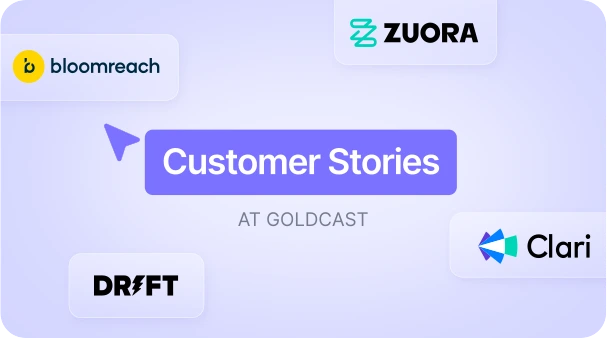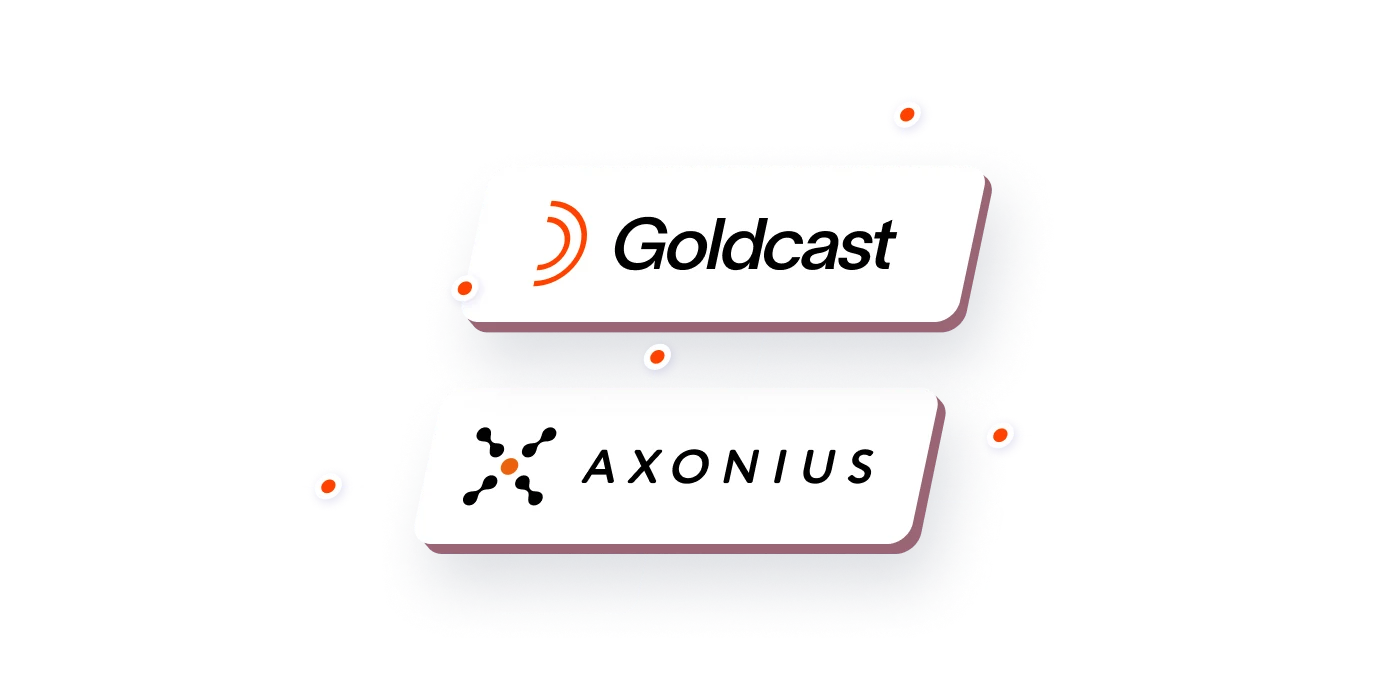How to Launch a 400-Person Virtual event in 32 Days
When she’s not making the rest of us look like amateurs at the ice skating rink or hanging out with her French bulldog Sonya, you can find Anna Suslova leading high-touch marketing campaigns for one of Gartner’s coolest security and threat intelligence vendors.
As Senior Marketing Manager at Axonius, Anna has definitely done her time on the event circuit, both in-person and virtual. Her role encompasses everything from running events, webinars and third-party campaigns to refining the company’s lead nurturing program and increasing brand awareness.
You could say she’s the type of person who is always up for a creative challenge. But when Covid hit and her events calendar went from back-to-back to blank, she knew she’d have to deliver brand new ways of keeping the pipeline moving.
“Events are a must. You can’t just write off events because everything is virtual now,” says Anna. We sat down with the marketing ace to get the inside scoop on how she continued to deliver results for the business, and even doubled in size from five to eleven people despite an incredibly tough 2020.
The backstory: A love for travel and B2B startup marketing
Anna Suslova has always loved doing big things, with small teams.
Before she began her journey as Senior Marketing Manager at cybersecurity platform Axonius, she hit the career path running by participating in marketing co-ops at John Hancock and Withings (formerly Nokia Health) back when she was a student at Northeastern University.
From there, the budding B2B marketer landed a co-op with Withings, a connected device startup company that got bought by Nokia during Anna’s time there. As you can imagine, she had an awesome experience there.
“I got to travel with the team and just really learn hands-on what marketing was like. I knew then that marketing is what I wanted to do.”
After she graduated, Anna landed a job at cybersecurity startup Cybereason as a Field Marketing Campaigns Manager, and loved every bit of it. She had found her home in cybersecurity, but it wasn’t going to be easy. Anna realized pretty quickly that Chief Information Security Officers (a.k.a. CISOs) are a tough persona to win over.
![[object Object]](https://cdn.sanity.io/images/2939l4aj/production/cece3f1a1a91ed193734d36f6655d07106b7ca9e-688x515.png?w=800)
“The buyers, customers and prospects within the cybersecurity industry are quite different from other industries. They're very particular. So it takes a while to learn and understand your buyer personas and what they're looking for, but I knew I wanted to stay there.”
Anna was determined to crack this market. And things were going great, until Covid hit.
“Before Covid happened, events were a major part of our strategy. That's where we brought in a lot of leads, but it wasn’t just about the leads. It was about the people you meet at events. It's about those valuable, face-to-face interactions. Those one-on-one meetings. Those leads become way more qualified than someone who attends a webinar. Events are a very big part of how we generate qualified sales leads.”
The entire world of event marketing moved online overnight and Anna knew right away she’d need to find a way to not only continue, but truly differentiate their events to rise above the noise.
Business Isn’t As Usual: Planning Virtual B2B Events
“My manager came to me and said, ‘We have all of these leads in the pipeline that we need to convert. How do we do that?’”
Anna and the team started brainstorming. They knew that now more than ever, they needed to be there for their customers and top accounts.
“Initially we were going to run a campaign called Predictability with the goal of helping people understand how to make 2021 more predictable,” she explains. But after a little more hashing through it, the team knew they needed to go deeper. They needed a place to connect with existing customers and prospects from top accounts, people who needed any additional care and support now that everything had been upended by the pandemic.
So, they settled on Predictability 2021, an intimate half-day virtual event exclusively for top accounts.
In a typical year, Anna and the team would have three months to prepare for an event. But this is 2020. This year, she had just 32 days to organize the entire summit.
Anna needed to find a virtual event platform fit for a CISO audience—and she needed to find it fast.
“We’ve attended multiple virtual events these past two quarters since Covid hit and to be honest, I wasn’t particularly impressed with any of them. We didn’t want this to feel like another webinar. We didn’t want Zoom. We didn’t want GoToWebinar. We wanted something that would make us stand out.”
So when Anna’s CMO mentioned Goldcast, she was eager to check it out. “I jumped on a demo with Goldcast and I really, really liked what I saw,” she recalls. Anna asked Goldcast to create a test environment to ensure the virtual conference could be customized to their persona’s unique needs.
“Everyone just has webinars and virtual event fatigue at this point, so we need to stand out. The other important thing for us was capturing as much data as possible and making sure that the platform integrated with some of the software that we use,” she explains.
![[object Object]](https://cdn.sanity.io/images/2939l4aj/production/b884d002251e060a495890df0c51d7385db8cc68-1427x490.png?w=800)
Having participated in some of the IT community’s largest industry events, Anna and her team are no stranger to the post-event “so what”, which is exactly why they always strategize their post-event follow up before the actual event.
She knew that in order to really prove the impact on pipeline and revenue, she’d need an event platform that would go beyond email addresses to collect information her sales team could actually use.
“Goldcast gave us data beyond just here's who attended who didn't attend. It told us exactly which person attended which session, how many sessions they attended and for the exact number of minutes. We knew exactly how engaged they were and how many resources they downloaded,” she explains.
We’ll get back to Anna’s fail-proof event follow up strategy in a minute. First, let’s take a closer look at Predictability 2021.
A peek inside the event: 400 signups, 50+ demos, zero regrets
Anna’s audience is responsible for the IT security underpinning some of the world’s leading brands and this audience has very particular needs around privacy and personalization.
“We didn't want attendees to see other attendees' information,” Anna explains. “That was really important for us and Goldcast was able to work with us and made it so that we were able to monitor the chat and the Q&A ourselves, before the audience could see it.”
But for Anna, that wasn’t the only perk of using a completely customizable event marketing platform.
![[object Object]](https://cdn.sanity.io/images/2939l4aj/production/e34573bbb83b617907408e6de130fdb1ea052ce5-1368x462.png?w=800)
“We also have very specific brand colors—orange, black, and white. So for us, it was important that Goldcast could give the event more of an Axonius feel. These are small but important things you just can’t do in Zoom,” she explains.
By hosting the event on Goldcast, Anna was able to offer not only a better brand atmosphere but a more dynamic event program as well.
Attendees could choose to attend the virtual plenary session on the main stage, or hop into the more intimate breakout rooms for one-on-one sessions with her sales reps. They even donated $25 per attendee to the International Consortium of Minority Cybersecurity Professionals (ICMCP) and had the president come speak at the event. Armed with their theme of how to make 2021 more predictable, Anna and the team set the goal of securing 100 attendees and 50 demos. So, how’d they do?
“We had over 400 signups,” says Anna. Plus, a group demo which enabled them to reach well beyond 50 attendees. And the way Anna sees it, they couldn’t have done it without the help of a human-first event platform.
“I really appreciated how responsive the Goldcast team was. They were willing to work with us despite our very short timeframe and customization needs. We were so grateful to have them there the day of the event in case anything went wrong. We even had a Slack channel set up with them dedicated to planning the event,” says Anna.
Even without a physical five-star venue, she was determined to make each of her attendees feel like a VIP.
“If an attendee had any technical difficulties, we knew it would be taken care of in the next five-to-ten minutes which was amazing. I don't think you can get that level of support with Zoom, GoToWebinar and other virtual platforms.”
For Anna, one thing that hasn’t changed since moving to online events is the pressure of the big day.
“As the organizers, you're stressed. You're like, ‘What's going to go wrong next?’ You're always trying to anticipate the next thing that's gonna happen. But the summit went really, really smoothly. There were almost no hiccups and it was such a relief to our team.”
Despite having little more than one month to plan the event, Anna and the Goldcast team took the time to talk through all the possibilities and potential worst case scenarios to make sure they’d be ready for anything.
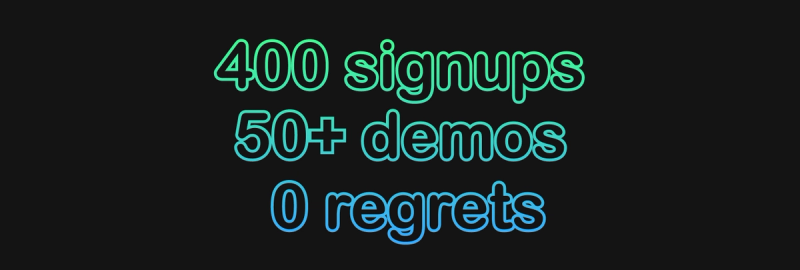
After the event: How Anna enabled her sales team to transform the event into revenue
But if Anna knows anything for sure, it’s that what happens after the event matters just as much as what happens the day of.
“The most important aspect of events, webinars, or anything that we do is always the follow up” explains Anna. “Follow up is how you convert. You have to test different things out beyond just ‘Here’s your recording, I’m here if you need me.’ You have to keep going.”
Here’s a step-by-step breakdown of Anna’s event follow up strategy.
Step 1: Segment the attendee list.
First, Anna and the marketing team divided the list into three categories:
- Attendees
- Demo attendees
- No shows
Why? Because no one likes a generic “Thank you for attending” email. By kicking off post-event follow up with relevant audience segmentation, Anna sets her sales team up for better conversion rates over the long-term.
Step 2: Arm sales with customized templates.
Next, ‘Demo attendees’ got a very short email thanking them for attending, offering the on-demand recording of all the sessions and letting them know the team is here if they have any questions.
‘Attendees’ also got a thank you follow up but this one also included Gartner’s Cool Vendor Report, with a note about Axonius recently making the list and info on how to set up a demo.
‘No shows’ got the recording of the event, a piece of content and a CTA to reach out with any questions.
Step 3: Give sales the data they need for hyper-relevant follow up.
Finally, marketing handed sales a recap spreadsheet with the sessions attended by each attendee and what resources they downloaded so they could customize their follow up templates and send personalized follow up to all their top accounts.
From there, sales had everything they needed to start reaching out to ‘demo attendees’ and ‘attendees’, using separate, customized templates for each.
Anna and her team also supported sales in going the extra mile to customize first touches and 1 : 1s for top accounts and prospects they had an active thread with.
And it wasn’t just the internal team that was thrilled with the event. Anna received a personal message from an attendee with the following feedback:
"I enjoyed the conference thoroughly. I'd like to commend you and your team for keeping the pace going forward at all times instead of getting bogged down… Also your choice to use Goldcast cast was great as it gave the whole event a much more polished broadcast feel rather than the Zoom meetings we've all become numb to."
“I think that kind of says it all,” laughs Anna. For her part, Anna thought the event “felt more real. Like a step closer to in-person events.”
Partnering with sales for a pandemic-proof pipeline
Anna the marketing team prepared sales with all the resources they need to be successful. For her, that’s just what you do.
“When two teams respect each other and respect each other's work, I think that's when you have the most success,” she says. She and the team regularly check in to find out what the top accounts are, where more events might be needed and most importantly—”How can we help you be more successful as a sales director or rep?”
It’s a simple, service-driven philosophy that seems to have worked out pretty well for the entire crew at Axonius. It’s a level of trust between marketing and sales that you don’t often see, and it has enabled their business to take important risks during one of the most pivotal times in recent history.
“We might have a crazy idea and we go with it and then we look back and say, ‘You know what? That didn't work as planned. Let's not do that again.’ But you know, you have to try. You always have to try. The more you try, the more you know. And sometimes we get surprised like, wow, we really didn't think that our audience was going to react well to that but they loved it. Let's take that idea even further and see if they like that, too. So, you never know. You just have to try.”
These days, Anna’s spending more time finding ways to shift and stretch the virtual events model, while tying in important initiatives around giving back. “It's not just about getting leads. We also have to think about how we give back,” she says.
Company
Axonius
About
Axonius gives customers the confidence to control complexity by mitigating threats, navigating risk, automating response actions, and informing business-level strategy. With solutions for both cyber asset attack surface management (CAASM) and SaaS management, Axonius is deployed in minutes and integrates with hundreds of data sources to provide a comprehensive asset inventory, uncover gaps, and automatically validate and enforce policies.
Industry
Technology
Website
https://www.axonius.com/Customer Since
2020
Favorite Features
Registration and Attendee ManagementUse Case
Virtual Events
Summit
Stay In Touch
Platform
Resources
Company
Community
© 2025 Copyright Goldcast, Inc. All rights reserved.



 Upcoming Events
Upcoming Events Event Series
Event Series On-Demand Events
On-Demand Events